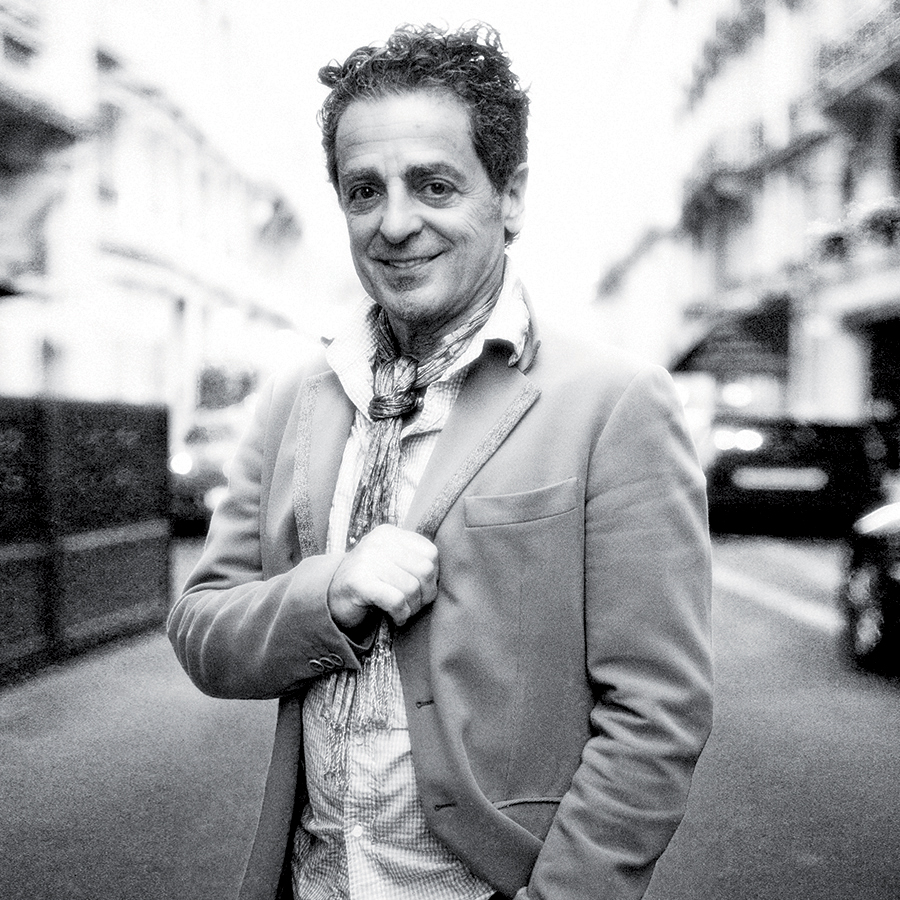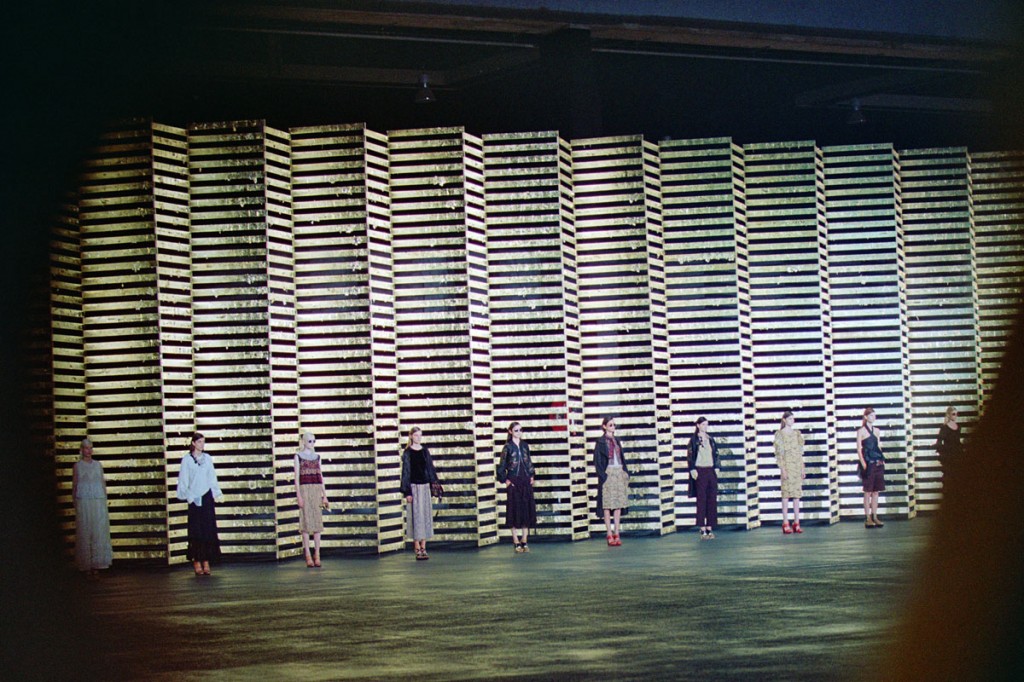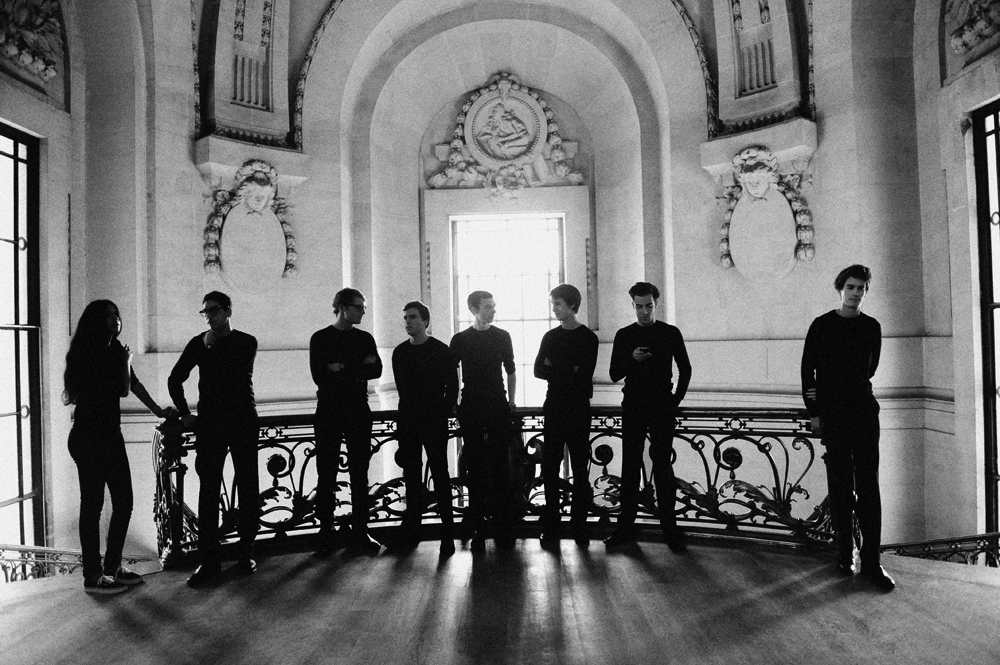
ARMAND HADIDA ON DISCOVERING TALENT
By Crash redaction
TALENT SCOUT AND FOUNDER OF L’ECLAIREUR, ARMAND HADIDA HAS A RADICAL TAKE ON THE FASHION INDUSTRY AND HOW IT WORKS. HE MET WITH US TO ANALYZE EVERY ASPECT OF THE FASHION SYSTEM, FROM PRODUCTION AND DISTRIBUTION TO SEASONS AND COLLECTIONS.
As founder of the concept store L’Eclaireur, do you see yourself as a sort of guide, since the fashion world is so vast and difficult to track in today’s world?
I’m no guide. I’m only one small cog in this giant system. Actually I’m that cog no one notices, but it plays a crucial role. And I’m happy to be a part of the system, because it’s so magical, as long as you have a chance to take a step back and get the kind of perspective that helps make the complexity of our world a little more meaningful. I don’t want people to misrepresent what we want to share with our customers. The choices we make belong to us, and they make sense for us. It takes time and a little respect to understand that.
Are you able to keep an open mind to new things? Do you have time to discover new design?
We have the time, but we’re mostly “slaves” to our background. The truly original work we’ve discovered in the past has had a profound impact on us. We’re mostly drawn to a sense of artistic integrity. We need to see something personal. It’s this kind of integrity and isolation from everything else that makes the difference and makes someone’s work original. New designers are out there, but they still need time to arrive at something deep.
How do you go about discovering new talent?
It’s visual, above all. The eye is our most valuable tool, our sharpest means of judging work in its presentation and smallest details. That’s how we decide to take a second look and examine things a little closer. You can often tell at first glance if something is not fully mature, or if there is effort and intelligence, but in a way that’s better suited somewhere else. So we don’t waste our time when we’re traveling around the world. Designers everywhere are fighting to be heard, and everyone wants to work with Paris retailers. That’s why we have this opportunity to see what each country has to offer.
Do you think most new developments will come from India and China now?
New things will mostly come from China, since there has been a lot of frustration and repression, and you can’t hold back your dreams. It’s something that eats away at the soul and then suddenly explodes. Curiosity is the best thing for creativity. The Chinese are always ready to learn: they want to know everything, they want to read all about what’s happening in the world, and that’s what helps you build something that will last.
Does Paris still hold the same fascination as a goal for new designers?
Absolutely. There are a lot of advantages in Paris, like our fashion events that draw in people and media from all over the world. The media still plays a key role as a champion and critic of fashion, and everyone’s still dreaming of Paris.
Though not many new designers have come from Paris lately…
Paris has one certain advantage: the past. The present is still a little weak and the future has us asking a lot of questions. It’s no longer the Parisian crowd who makes Paris what it is, but the international crowd. Paris no longer belongs to Parisians. There is no strong image of today’s Parisian woman. An image existed once in the 70s and 80s, but it’s slowly disappeared, and I’m afraid the next wave will erase all memory of it. We need to create a real, authentic Paris and reject the superficial.
What needs to be done to develop French design?
We need to stop creating new brands. We need to cultivate the land and try to make it more fertile. We need to support good schools and attract the best professors by making Paris an exciting fashion capital through design, handicrafts, and anything related to artistic expression. That’s what’s important. What’s more important than sponsoring these kinds of initiatives? It’s incredibly noble. We should never forget to help young designers who arrive and need our assistance and support.
Does design need more distribution or protection?
Design needs protection today. I told Didier Grumbach a long time ago that filming fashion shows would only create more problems for designers. We need to protect design, and even the media needs to pause for a moment and think about how they are promoting fashion and talking about fashion shows. We need to overhaul everything, starting with this seasonal calendar that’s been imposed on us. And we need to rethink our distribution methods and this democratization of design in order to better protect it.
Are you talking about protecting against copying?
I mean protecting designs from copiers and all those vampires who can put out cheap collections in no time. Not only Zara, but all the rest, too. And we can’t keep selling summer clothes in winter, putting summer clothes on sale in the summer and starting winter sales in winter. Our distribution calendars are a total mess right now. Everything is wrong. We’re living on lies and that’s why the market is changing completely. Certain corrections need to be made, but some people can’t make them so they’ll have to be made by distributors. We don’t have a concept of seasons anymore, seasons no longer matter. If we keep the same rhythm we have now, we’ll have no future. We need to recreate an authentic concept of seasons, but we also need the power to do that, and not everyone has that power.
What do you think about pre-collections and intermediate collections?
We need to have eight collections a year, and not four, so that clothes are delivered on time and not six months in advance. It’s pointless to get parkas, furs, and all sorts of warm clothes in June and July. Items like that should arrive in late October and early November, or even December. And that’s when we should restock our stores so we can encourage customers to come back regularly. That’s why things like pre-collections are essential for changing our distribution calendar. Fashion is change, which means difference. These two words best encapsulate what fashion represents. With only one delivery per season, I have a hard time representing change. Right now we only have four deliveries a year, and I would like to see eight.
Should collections be smaller?
Of course. It’s a lot easier than we think because it actually makes things more flexible for our workforce and accounts. It’s also a lot more interesting for customers. And it’s a way to make our purchasing investments more valuable, while encouraging us to place more value on our customers’ purchases.
What do you think of websites like vente-privee?
It’s the mechanisms in place that have helped make these kinds of sites so successful. It’s the fact that big designers need these networks to dispose of their extra stock. Vente-privee exists because the production methods are not fine-tuned, so there are huge surpluses created by wrong production estimates. I think it’s a mistake, because I think production should be cut by at least half. Although these kinds of parallel markets have had some hugely profitable years, especially for apparel by Italian brands that everyone knows. So companies decided they wanted to make a profit not only in their distribution network, but also in parallel markets like duty-free stores. So vente-privee is successful today because of all these incorrect estimates. We need to readjust our production codes. I still know a few producers who never sell their extra stock but instead burn all their merchandise. I’m lucky enough to work with stylists whose collections are never discounted. Our location on Rue Hérold in Paris protects its merchandise and will never sell itself or its customers short, and that has worked well for us. You just need to have the right people in the right positions to make sure that production and quantities are properly managed. Profit margins are so comfortable for producers that they can afford to sell to discounters because they still turn a profit.
That goes for big companies, but what about new young designers?
Young designers definitely do not have the same kind of comfortable profit margins. With the small quantities they produce, they are still prisoners of very limited figures.
Who are the most emblematic designers in your opinion?
I have the most respect for the integrators in the fashion world. In Japan, that’s definitely Junya Watanabe, and also Comme des Garçons. I also have a lot of respect for Carol Christian Poell, and also people like Paul Harnden, who refuse to make more than 500 models of a single item, whether it’s a pair of shoes or a jacket. Of course it’s politics and strategy, but these items are never discounted and a lot of people want them. And a lot of retailers, too, since only about 20-22 stores around the world sell them.
In your opinion, that’s what real luxury means in today’s market?
That’s luxury. Luxury isn’t about saying, « I make this and it cost me this much money and I’m selling it for this much, so I can go build one or more giant outlets in the world’s fashion capitals and buy the biggest ads in the world to make my brand rich and my ego huge.” Luxury is an exchange, a transmission between designers and consumers where the distribution network is as small as possible. Luxury is the heritage we receive from a designer and that we’re privileged to take part in.
So your ideal model is closer to couture or haute couture?
Haute couture is not my thing at all and I’ve never really considered it. It’s something that leaves me completely cold because, in my opinion, women don’t need so much artifice to be beautiful. In my opinion, haute couture is a kind of excess that has no charm for me at all.
What do you think about the success Azzedine Alaïa has seen?
He’s another one of my protégés. I have a lot of respect for him because he’s a young man who rejected all the dictates of the fashion market. He managed to impose his own calendar, his own delivery schedule, his own fashion show dates. He also personally chooses his retailers and the people who will be able to support him through difficult times. Through it all, he’s managed to stay true to himself and never compromise, which is respectable and fairly rare. If you want to be an artist, you have to be true to yourself, you have to be an individual. You can’t surrender any part of yourself, you can’t compromise, and you can’t let other people’s ideas have too much influence on you. There’s only one policy: what your heart says and that alone.
What appeals to you most when you discover a new designer?
The courage they had to forget everything that’s been done, to break all the codes and create their own language with their voice and their words. That’s what makes clothing unique and that’s how you recognize it.
But clothing also has to be wearable and sellable?
Clothing isn’t always made to be worn. You know, there are works you buy and you never display because they’re for you, just for you. You don’t even hang them on the wall, you just set them on the ground in a corner where no one can see them, because maybe you’re the only one who understands them and not even your friends will be able to understand.
Do you see a lot of analogies between art and fashion? Are you an art collector?
That’s my world. I was telling you about multiverses, that’s what it is. I’m the biggest virtual collector in Paris. I take absolutely everything that doesn’t belong to me and I take even more pleasure in it than the people who actually own it. When I like something, I get it.









